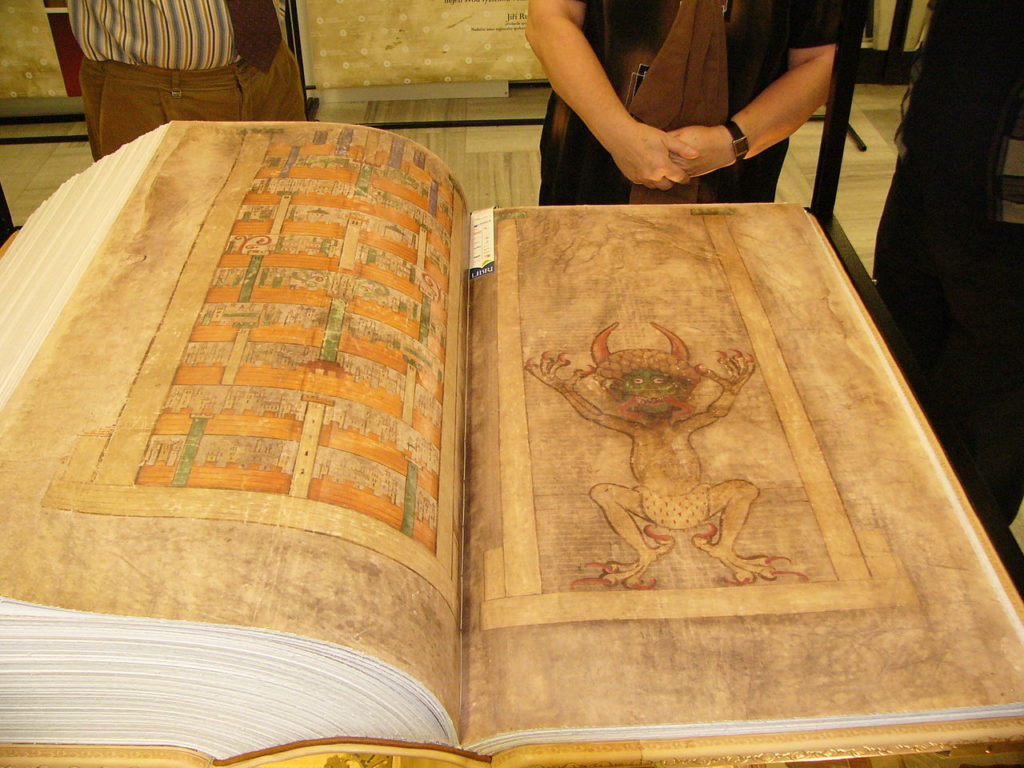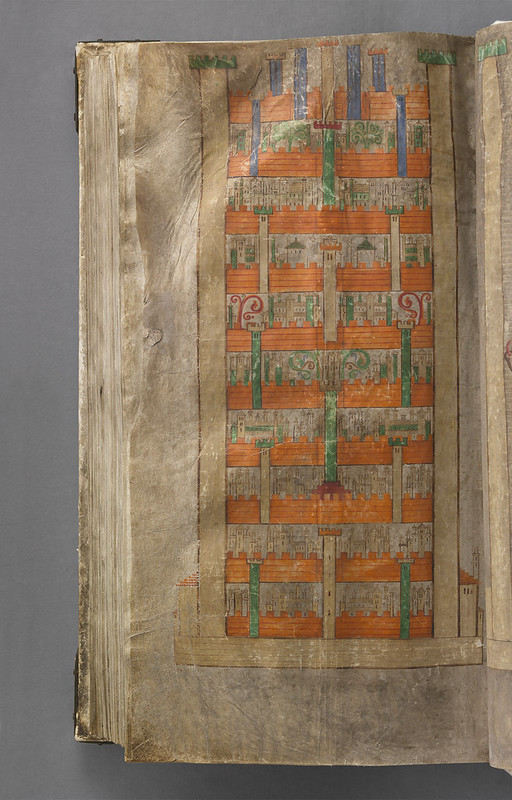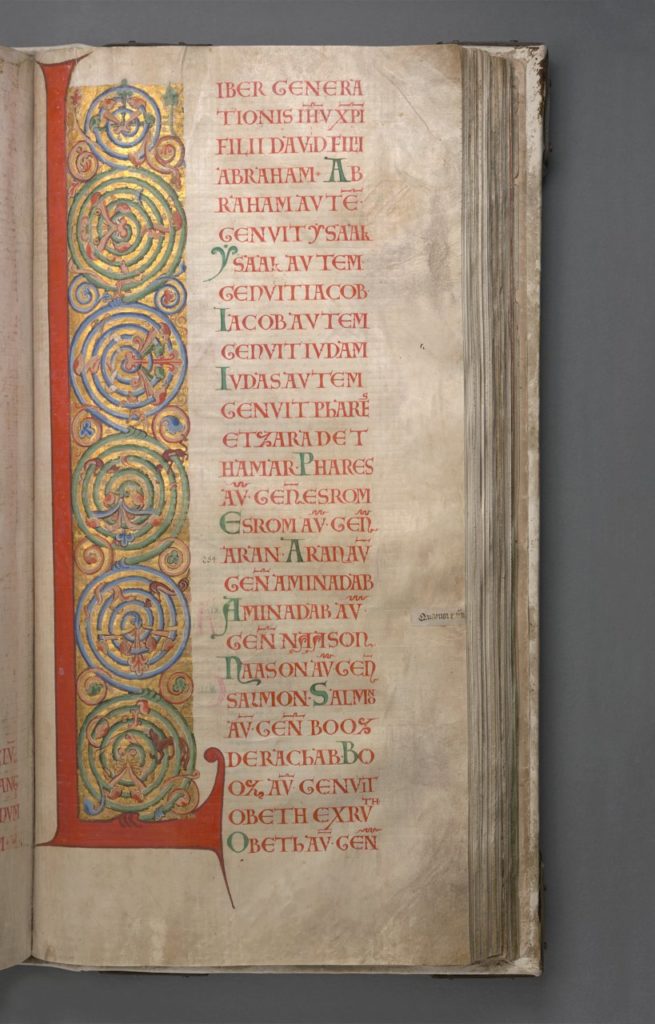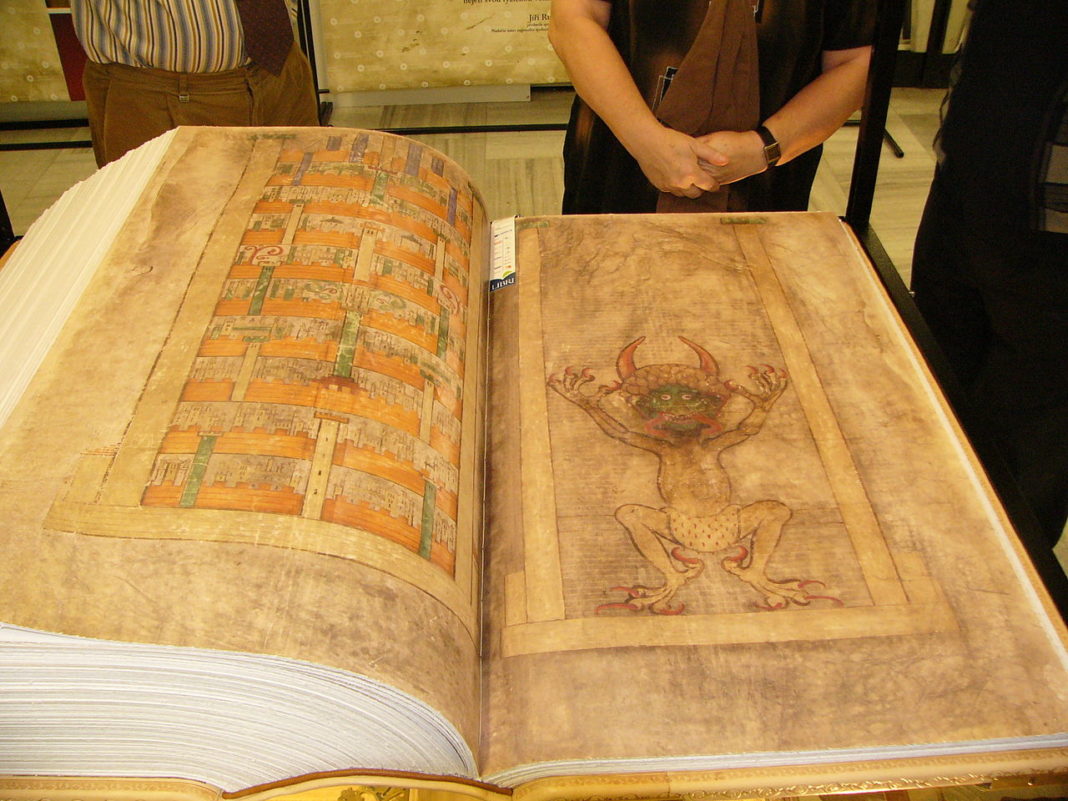The Codex Gigas (“Giant Book”; Czech: Obří kniha) is the largest extant medieval illuminated manuscript in the world, at a length of 92 cm. Literally meaning “giant book,” the Codex Gigas was created in the 13th century and originally stored in the Benedictine monastery at Podlažice. The manuscript contains not only the New and Old Testaments but also an assortment of other shorter texts addressing matters of extreme practicality for the time: exorcism, grammar, a calendar, and medical works, to name a few.

According to legend, the Codex was created by Herman the Recluse in the Benedictine monastery of Podlažice near Chrudim in the Czech Republic. The monastery was destroyed sometime in the 15th century during the Hussite Revolution. Records in the codex end in the year 1222.

The codex’s bookbinding is wooden boards covered in leather, with ornate metal guards and fittings. It is at 92 cm long, 50 cm wide and 22 cm thick. Weighing 74.8 kg, Codex Gigas is composed of 310 leaves of vellum claimed to be made from the skins of 160 donkeys, or perhaps calfskin, covering 142.6 m2 in total. The manuscript includes illuminations in red, blue, yellow, green and gold. Capital letters at the start of books of the bible and the chronicle are elaborately illuminated in several colors, sometimes taking up most of the page; 57 of these survive. (The start of the Book of Genesis is missing.)

According to one version of a legend that was already recorded in the Middle Ages, the scribe was a monk who broke his monastic vows and was sentenced to be walled up alive. In order to avoid this harsh penalty he promised to create in one night a book to glorify the monastery forever, including all human knowledge. Near midnight, he became sure that he could not complete this task alone so he made a special prayer, not addressed to God but to the fallen angel Lucifer, asking him to help him finish the book in exchange for his soul. The devil completed the manuscript and the monk added the devil’s picture out of gratitude for his aid. In tests to recreate the work, it is estimated that reproducing only the calligraphy, without the illustrations or embellishments, would have taken twenty years of non-stop writing.
According to Wikipedia; atlasobscura














